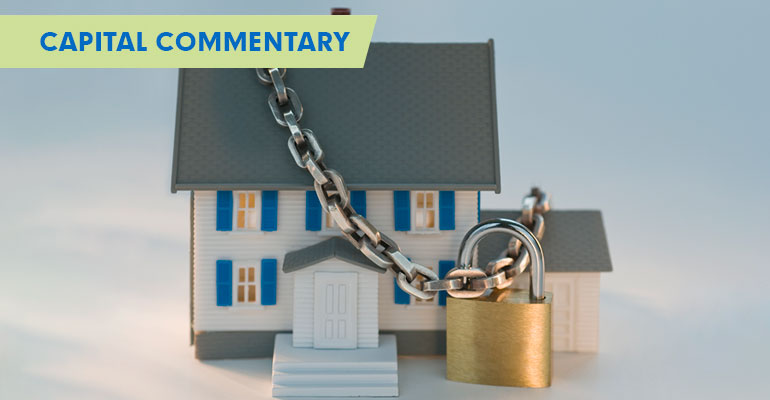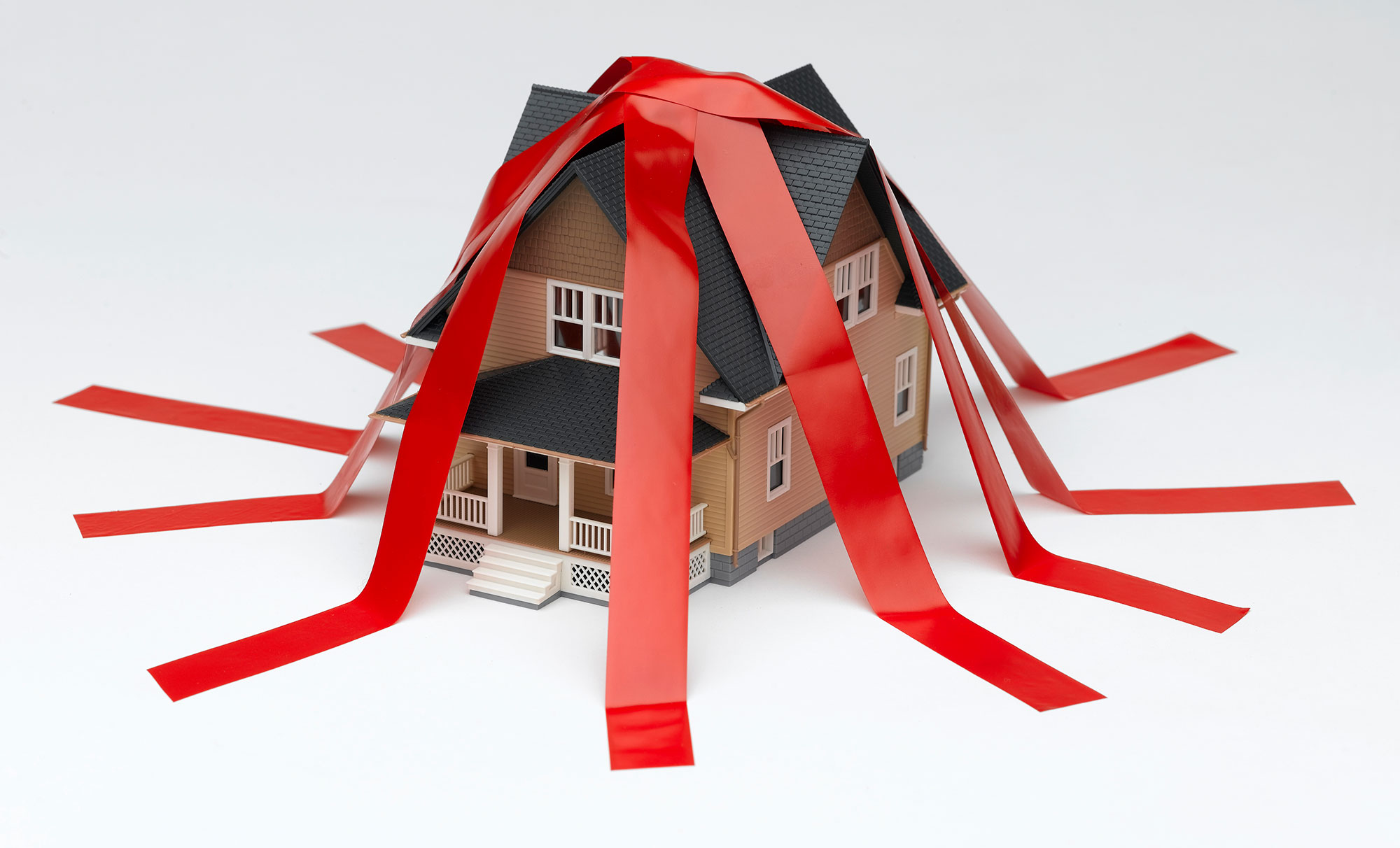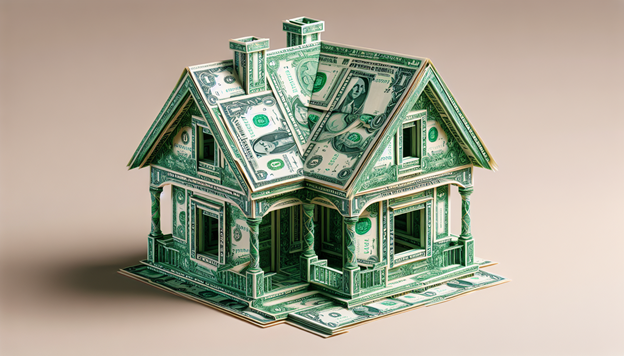
The nation will elect its 47th president in just over two months, and many voters will head to the polls with a primary concern on their minds: the lack of affordable housing.
High interest rates, growing household formations and a lack of housing supply are converging to give prominence to the issue like never before.
How are former President Donald Trump and Vice President Kamala Harris addressing the crisis? Keep reading this issue of Capital Commentary to find out.
1. Big Thing: Locked out of Housing
The hurdles to buying a first home keep getting higher.
By the numbers: The country’s median existing-home sale price in June was $426,900, according to the National Association of Realtors® (NAR) — the highest median price NAR has ever recorded.
- The inventory of unsold existing homes was at a 4.1-month supply in June. It’s typically believed a balanced market requires a five- to six-month supply.
- Interest rates are still more than double what they were during the pandemic.
- The economy still lacks 4.5 million housing units.
Why it matters: Nearly 40% of renters believe they will never own a home. Homeownership is arguably the most important asset for building wealth in the U.S.
The bottom line: Politicians ignore the housing affordability crisis at their peril.
In a February Redfin survey, 91% of Generation Z adults and 87% of Millennials said housing is the No. 1 issue for their generation. The 3,000 respondents included homeowners and renters.
2. Trump: Red Tape and Flying Cars

Midway into his term as the 45th president, Trump signed an Executive Order creating a White House Council on Eliminating Regulatory Barriers to Affordable Housing.
Why it matters: The nation’s housing shortage isn’t a new problem. As Barron’s recently noted, “In the 14 years since the 2008–2009 financial crisis, builders constructed 17 million homes, about 20% fewer than in the 14 years prior.”
The Trump administration put the blame for the housing shortage on burdensome regulations.
“Federal, state, local and tribal governments impose a multitude of regulatory barriers — laws, regulations and administrative practices — that hinder the development of housing. … These regulatory barriers increase the costs associated with development, and, as a result, drive down the supply of affordable housing. They are the leading factor in the growth of housing prices across metropolitan areas in the United States.”
Trump’s Executive Order cited overly restrictive zoning and growth management controls; rent controls, cumbersome building and rehabilitation codes, excessive energy and water efficiency mandates, and undue parking requirements as particularly onerous.
The Council issued its report just one day before the Trump administration left office in 2021.
- It concluded that regulations impose costs of $100–$200 billion annually in terms of higher housing costs and lost economic opportunities.
- Among its recommendations was a plea from homebuilders for local jurisdictions to speed the permitting process for building houses. “Time costs more than the regulations,” complained one Texas developer.
More recently, Trump pledged to make federal land available to build up to 10 futuristic “Freedom Cities” the size of Washington, D.C., complete with flying cars to speed commuting to work.
What they’re saying:
“We’ll actually build new cities in our country again. These Freedom Cities will reopen the frontier, reignite American imagination and give hundreds of thousands of young people and … hardworking families, a new shot at homeownership and in fact, the American dream.”
Donald Trump, March 3, 2023
While campaigning for president in 2024, Trump has leaned into slashing both inflation and regulations to drive down costs.
Quick fix? The housing supply and affordability problems will also improve, argues Trump, once millions of illegal immigrants are deported, a position echoed in the 2024 Republican Party platform.
3. Harris: Pushing Ca$h and Credit$

Homebuilder tax credits and down payment assistance to first-time homebuyers comprise the heart of Vice President Kamala Harris’ plan to address affordability.
Harris’s economic plan, rolled out in mid-August in Raleigh, North Carolina, also calls for 3 million new homes over the next four years.
What they’re saying:
“There’s a serious housing shortage in many places. It’s too difficult to build, and it’s driving prices up. As president, I will work in partnership with industry to build the housing we need, both to rent and to buy. By the end of my first term, we will end America’s housing shortage by building 3 million new homes and rentals that are affordable for the middle class.”
Kamala Harris, Aug. 16, 2024
Why it matters: Homebuilders can’t profit from building small homes.
The expense of land and the cost burdens of regulations force builders to construct larger homes. However, the country needs smaller homes for single people and new families.
Harris seeks to solve that problem by providing tax credits for builders to construct entry-level houses much like the Low-Income Housing Tax Credit has done to encourage building rental housing since being enacted in 1986.
Like Trump, she advocates for building homes on land now owned by the federal government.
Yes, but: Harris also wants to lower barriers to purchasing starter homes by proposing $25,000 in down payment assistance for first-time buyers.
The proposal is significantly larger than another Democratic idea in Congress to offer down payment assistance to first-generation homebuyers.
4. The Critics Weigh in

One rule about politics is the more specific the proposal, the sharper the knives.
Critics were quick to slice up Harris’s down payment assistance plan and the complaints came from divergent political viewpoints.
What they’re saying:
Under the heading, “The times demand serious economic ideas. Harris supplies gimmicks,” The Washington Post wrote:
“Her proposed $25,000 in down payment assistance for first-time homebuyers stimulates the demand side, which risks putting upward pressure on prices. Such a measure might make sense if Ms. Harris paid for it by eliminating other demand-side housing subsidies, such as the mortgage interest deduction, a roughly $30 billion annual drain on federal revenue that benefits many wealthy Americans — but she does not.”
The Wall Street Journal’s Allysia Finley added:
“Ms. Harris’ plan for $25,000 in down-payment assistance for ‘first-time’ buyers would magnify [default] risk. It would also fuel inflation in housing prices.”
Trump wasn’t spared criticism, either.
The libertarian magazine Reason called Trump “bipolar” on land-use restrictions.
“Our first developer president went from proposing solid (pro-builder) YIMBY-inflected policies to running for re-election as the nation’s NIMBY-in-chief. … In campaign season op-eds, tweets and speeches, the former president started warning that Democrats wanted to end the ‘suburban lifestyle dream’ by ending single-family-only zoning and forcing multi-family development onto low-density neighborhoods.”
Wrote Bloomberg:
“Trump’s promises to deport undocumented immigrants and ratchet up tariffs on imports would both raise construction costs.”
Immigrants make up nearly one-third of construction tradesmen nationwide. The share is even higher in California and Texas, roughly 40%. Nearly 400,000 vacant jobs in residential construction have already slowed home building.
Yes, but: Harris’ tax credits to spur the building of starter houses earned higher marks from analysts.
Jim Parrott and Mark Zandi wrote in The Washington Post that builders need incentives to build entry-level homes:
“Why haven’t developers built more of these homes? Because the numbers don’t add up. For a mix of reasons dating back to the financial crisis and worsened by the pandemic, the cost of land, labor and materials has risen to levels that make it all but impossible for most builders to make an adequate profit on affordable housing. The solution is to change these economics.”
One way to accomplish that, say the pair, is to give homebuilders a tax break on profits earned from homes built and sold to first-time homebuyers.
Count the National Association of Home Builders (NAHB) as a fan of the proposal:
“I’d really like to see the builder incentives that the vice president is proposing,” said Jim Tobin, President and CEO, NAHB, told Politico Pro. “Those supply-side incentives are really encouraging.”
Our thought bubble: We should set aside policy and political differences and focus on the good news that both Trump and Harris recognize the desperate need to build more homes.
The last word: The NAHB’s Tobin said it best, “I’m really encouraged to see housing policy taking center stage. To see housing be a central focus of a presidential campaign is something I have not seen before in my 30 years in Washington.”

About Arch MI’s Capital Commentary
Capital Commentary newsletter reports on the public policy issues shaping the housing industry’s future. Each issue presents insights from a team led by Kirk Willison.
About Arch MI’s PolicyCast
PolicyCast — a video podcast series hosted by Kirk Willison — enables mortgage professionals to keep on top of the issues shaping the future of housing and the new policy initiatives under consideration in Washington, D.C., the state capitals and the financial markets.
Stay Updated
Sign up to receive notifications of new Arch MI PolicyCast videos and Capital Commentary newsletters.